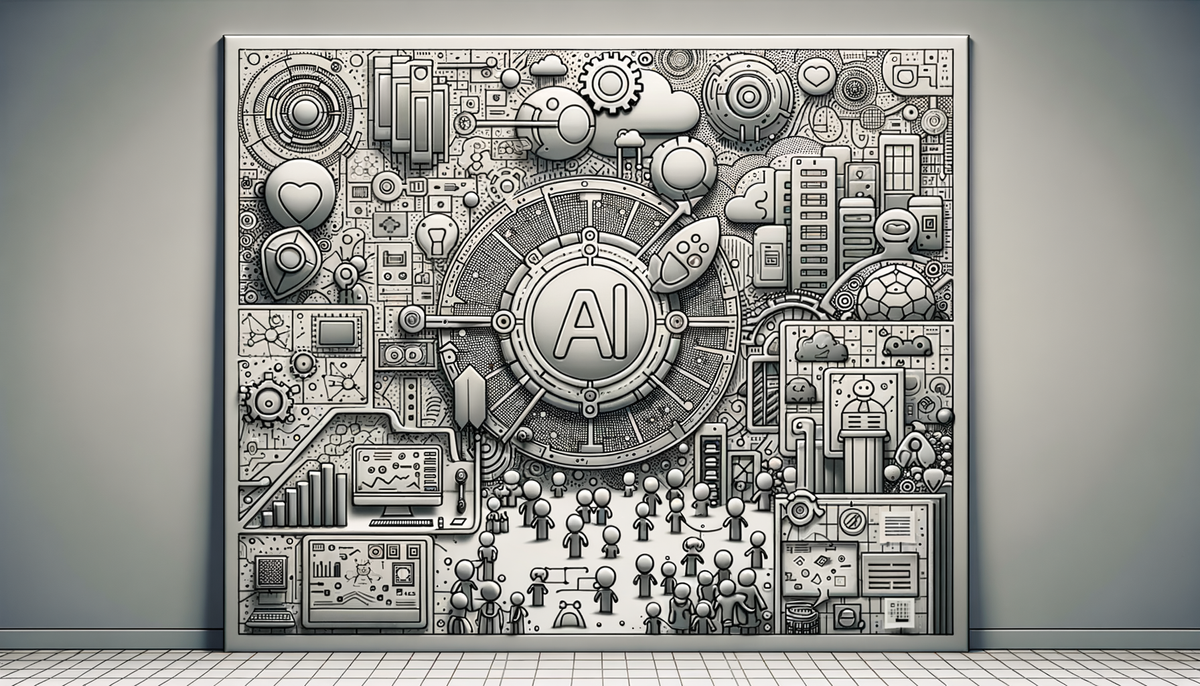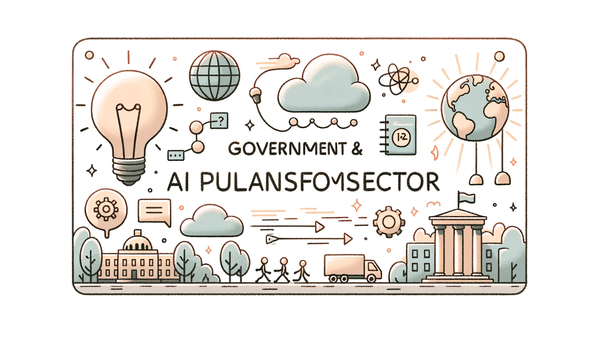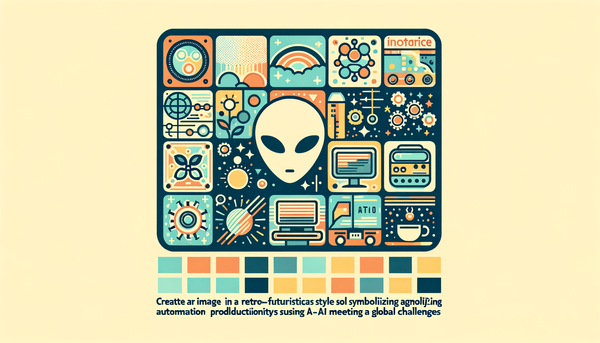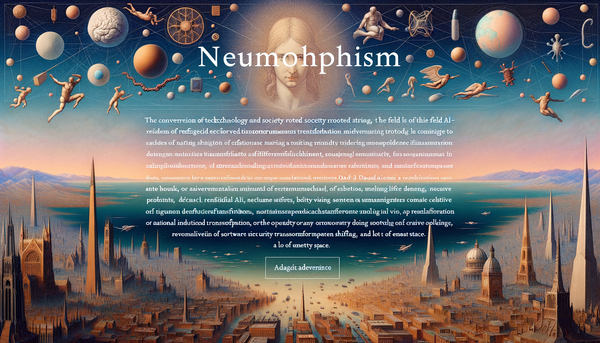The Third Coming of Microsoft AI and the Global AI Landscape

In a world where AI is reshaping industries from architecture to healthcare, transformative breakthroughs are not just futuristic dreams but vivid realities unfolding today.
AI-Powered Rendering in Architecture: Revolutionizing Design
The field of architecture and interior design is witnessing one of its most transformative phases with AI-powered rendering. Architects traditionally grappled with bottlenecks in visualizing complex designs and spatial innovations. The advent of AI-driven rendering techniques has dramatically accelerated project visualizations, allowing designers to iterate quickly and present realistic renderings in a fraction of the time. This breakthrough not only catalyzes creativity but also significantly reduces the cost and inefficiencies that long plagued the industry.
One anecdote that resonates within architectural circles is the story of a boutique firm that reduced its project turnaround time by employing AI rendering. Designers found themselves liberated from the onerous tasks of manual adjustments and could focus on refining intricate architectural details. Experts in the industry argue that the integration of AI is spearheading a design renaissance where imagination meets technological precision.
This surge of innovation was highlighted by recent discussions on AI innovations transforming our world, where the intersection of design and technology is portrayed as a synergistic force. There’s a parallel to be drawn with the digital revolution of the early 2000s; just as digital tools redefined photography and graphic design, AI is now reinventing the blueprint of our physical environment.
"We are in the early days of an AI revolution. In the long run, AI will change the very nature of how humans work and interact with machines." – Michael Dell
As AI becomes further embedded into the creative process, it is expected to lead to more sustainable and innovative design practices. Architects using these evolving tools can simulate various environmental factors, ensuring that structures are both aesthetically appealing and energy efficient. This double dividend of design and sustainability is positioning AI as an indispensable partner in the architectural evolution.
From Mitigating Health Risks to Enhancing Mental Health
Across the world, public health threats such as bird flu and youth mental health challenges have spurred researchers and practitioners to consider the immense potential of AI. Innovative approaches are being deployed to predict and mitigate the risk of outbreaks like bird flu, thereby shielding populations through advanced epidemiological models that can forecast and preempt disease spread. Alongside these measures, AI is also making significant strides in addressing youth mental health, where predictive analytics and personalized interventions offer new hope for early detection and support.
The dual application of AI in these domains not only demonstrates its versatility but also reinforces the idea that technology should be human-centred. Experts have noted that integrating real-time data with sophisticated algorithms can help in tracking potential outbreaks in densely populated areas while simultaneously monitoring social media trends to understand youth behavior and mental health indicators. Such innovations can act as a foundation for building more resilient public health infrastructures.
For instance, consider city-wide initiatives that integrate AI systems with local health departments. These systems continuously analyze extensive datasets—ranging from migratory bird patterns to social media sentiment analysis—empowering local governments to allocate resources more effectively. These integrated solutions are already a topic of conversation in communities keen on leveraging digital health tools, and they provide a compelling example of how AI can mitigate risks while being sensitive to community needs.
The narrative is echoed by platforms like AI Innovations Shaping Our Future, which underscore that every domain touched by AI must prioritize ethical considerations and data privacy. In this journey towards a more secure and healthy society, it is crucial that policymakers and technologists work hand in hand to ensure that innovations serve all segments of the population equitably.
Telecommunications and the Hyperscaler Revolution: A European Perspective
At the crossroads of AI and telecommunications, a new revolutionary trend is emerging. Mistral’s call for telecommunications giants to leap into the hyperscaler arena has ignited fresh debates about regional autonomy, data sovereignty, and the future of cloud infrastructure. Speaking at the Mobile World Congress in Barcelona, CEO Arthur Mensch articulated a vision where Europe builds robust, homegrown data center infrastructures to better support AI innovations.
Historically, cloud infrastructures have been dominated by a triopoly of US-based tech behemoths—Amazon, Google, and Microsoft. However, with the AI revolution fundamentally shifting network demands, the need for decentralized, regional data centers has become paramount. If brought to fruition, this shift could reduce over-reliance on U.S. technology and foster an environment where localized expertise not only thrives but also defines the competitive edge of technologies available.
European players are taking this challenge head-on. The plan to establish a new data center in France is the first concrete step toward realizing a regionally-controlled cloud landscape, where AI services can run seamlessly across national borders with increased security and lower latencies. This move not only promises improved service personalization—with initiatives like the partnership with French telecom Free for the AI assistant “Le Chat”—but also a long-term strategic shift in the way data is controlled and processed.
This conversation on cloud decentralization is well aligned with discussions on latest developments in AI innovations where increasing use cases, from personalized data streams to intelligent network management, demand more resilient and flexible infrastructures. Building domestic capacity is emerging as a critical factor in maintaining competitiveness in a rapidly evolving global tech landscape.
Such moves also address the pressing demands of modern networks, where consumer expectations and enterprise needs drive the evolution towards smarter, more adaptive systems. European strategies, heavily informed by both regulatory and technological imperatives, promise a landscape where openness and local innovation can thrive amid increasing global competition.
Workforce Innovations Amid AI Disruption and Emerging Safety Nets
While AI’s pervasive influence brings unprecedented opportunities, it also precipitates significant structural shifts in labor markets, especially in regions like China. Jobs once considered secure are being redefined, prompting debates about worker protection and economic sustainability. As automation and AI technologies replace certain roles, innovative strategies such as a dedicated insurance fund are being floated as potential safety nets to protect affected workers.
This debate is not merely academic—it's a reflection of broader socio-economic transformations that many nations must navigate as technological momentum accelerates. For example, regions experiencing rapid automation in manufacturing or administrative sectors have started to explore social insurance models that could absorb the shocks of technological displacement. Such interventions could help bridge the gap between traditional employment and progressive automation, ensuring a smoother transition for displaced workers.
The idea is reminiscent of historical social safety nets developed during past industrial revolutions, updated to address the modern challenges of a digitized economy. By providing financial support and retraining opportunities, these insurance funds aim to encapsulate the protective spirit of welfare measures while also encouraging a forward-looking approach toward lifelong learning and skill development.
Platforms like China’s AI Hype Machine Kicks Into Overdrive bring these discussions to the forefront, emphasizing that technology, while disruptive, also offers the chance to reshape social policies for a more inclusive future. This approach is particularly important in urban centers where economic restructuring due to AI could lead to job polarization.
The Third Coming of Microsoft’s AI Leadership
In the competitive race between tech giants, Microsoft's journey in the AI landscape has been nothing short of remarkable. The resurgence of interest in AI leadership figures, symbolized by Mustafa Suleyman's renewed engagement, points to a shifting paradigm in how major corporations navigate the intertwining worlds of business and technology. Suleyman's involvement marks not only an ideological reinvigoration within Microsoft but also illustrates the company’s commitment to a future where ethical AI deployment is at the center of innovation.
This renewed focus has implications that ripple far beyond corporate boardrooms. For employees, it signifies an era where AI tools are seen as partners rather than competitors. The infusion of ideas from visionaries like Suleyman reinforces the notion that technology should serve to augment human ingenuity. This commitment is central to upcoming product strategies and new frameworks that promise to deliver responsible AI applications across myriad industries—from financial services to retail.
Microsoft’s evolving leadership, coupled with its technological investments in advanced multimodal AI models (like the recently discussed Phi-4 model), represents a microcosm of the balance between innovation and governance. Their approaches are often cited alongside insights from the evolving global dialogue on AI ethics which stresses that growth in AI should be harmonized with societal benefits.
This approach is echoed in influential pieces available on our site such as AI Innovations Transforming Our World, where leadership and ethical development are often described as the cornerstones for a sustainable and inclusive digital revolution.
Revolutionizing Glaucoma Care with AI
In healthcare, the intersection of AI and medical diagnostics is heralding a new era of precision and efficiency, particularly in the field of ophthalmology. Tohoku University’s development of a specialist-level screening system for glaucoma is proof of how AI can save sight—and by extension, improve quality of life. Traditionally, glaucoma screening requires experienced clinicians and time-consuming diagnostic procedures. AI-driven systems, however, can process complex imaging data rapidly and with high accuracy, allowing for earlier detection and intervention.
Such diagnostic advancements are not limited to academic or highly specialized environments. The potential for scaling these systems is vast, as many regions with limited access to expert healthcare can benefit from automated and highly reliable screening processes. Vision research has long emphasized that early detection of glaucoma is critical in preventing irreversible vision loss, and with AI, this process becomes much more achievable even in resource-limited settings.
An inspiring aspect of this innovation is the way it integrates advanced deep learning algorithms with everyday healthcare practices. Hospitals and clinics can deploy similar diagnostic AI systems to streamline patient triaging and allocate specialist resources more efficiently. Equally important, these systems help reduce human error, paving the way for more standardized and equitable care across different socioeconomic backgrounds.
For readers intrigued by technological breakthroughs in healthcare, additional insights can be found on our portal in articles like New AI Innovations Shaping Our Future, which show how diagnostic accuracy is just one facet of the broader capabilities of AI in medicine.
Geopolitical Implications: The Debate Around AI-Based Warfare
No discussion of contemporary AI could be complete without addressing its impact on global security and the ethics of warfare. A particularly contentious viewpoint is offered by industry commentator Alex Wang, who argues that letting any single nation dominate the development of AI-based warfare could prove perilous for global stability. Wang’s perspective raises profound concerns about the militarization of AI, especially as its applications evolve from conventional algorithms to sophisticated systems that could influence conflict outcomes.
The ethical and strategic issues surrounding AI in warfare revolve around accountability, control, and the asymmetries that such technologies might introduce into international relations. The fear is not only that AI could escalate conflicts by making warfare faster and more autonomous, but also that it might reinforce existing power imbalances. Such concerns are prompting calls for international regulatory frameworks that can balance national security considerations with global stability.
This debate also serves as a sobering reminder that while AI offers immense benefits across sectors, it also demands cautious, thoughtful implementation. The discourse around AI militarization is particularly resonant in forums discussing the broader societal implications of rapid technological progress, as highlighted in articles like China’s AI Hype Machine Kicks Into Overdrive.
Experts warn that without proper oversight, the deployment of AI in military contexts could lead to unpredictable outcomes. The challenge remains in crafting policies that simultaneously allow for technological innovation while establishing clear lines of accountability and ethical guidelines. Drawing lessons from historical arms control treaties, it is imperative that the global community works collectively to ensure that AI remains a tool for enhancing security rather than an instrument of destabilization.
"The pace of progress in artificial intelligence is incredibly fast. Unless you have direct exposure to groups like DeepMind, you have no idea how fast—it is growing at a pace close to exponential." – Elon Musk
This concern is a call to policymakers to revisit international law and consider the profound implications that AI may have in the realm of national defense and global peace. As nations grapple with these issues, the evolution of AI warfare remains one of the most critical discussions of our times.
Towards a Holistic AI-Driven Future
The multifaceted impact of AI—from revolutionizing the aesthetics and efficiency of architecture to reshaping global telecommunications, bolstering healthcare diagnostics, and even redefining the landscape of warfare and worker protection—signals an era of dynamic transformation. As AI continues to permeate and redefine every industry, society must strike a balance between embracing technological novelties and mitigating their unintended consequences.
This complex interaction between technology, economy, and society necessitates informed debates, adaptive policies, and an ethical compass that steers development towards the collective good. The perspective shared by thought leaders and industry experts, ranging from Microsoft's reinvigorated AI strategy to the proactive establishment of localized hyperscale data centers in Europe, underlines that the journey of AI is as much about innovation as it is about responsibility.
We stand at a crossroads, witnessing the merger of creativity with computation, where traditional boundaries are blurred, and new paradigms surface every day. Whether it is the architectural revolution powered by AI rendering or the pioneering work on glaucoma screening, the common thread is a relentless drive towards pushing the envelope of what is possible. Every milestone achieved in AI development is a testament to human ingenuity and our persistent quest for progress.
These stories, woven together, illustrate the holistic nature of the AI revolution: dynamic, disruptive, and deeply interlinked with the fabric of modern society. As we continue to explore this brave new technological landscape, it is essential to foster collaboration across sectors and regions. By doing so, we pave the way for an inclusive, secure, and sustainable future where AI acts as a catalyst for positive change.
For those who wish to dive deeper into the evolution of these technologies, exploring related stories such as AI Innovations Transforming Our World and the transformative insights from Microsoft’s AI developments on our website can provide further context and understanding.




